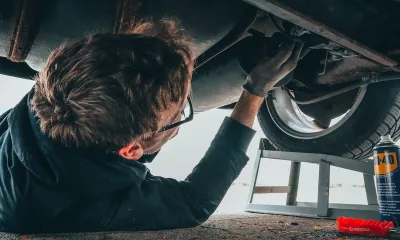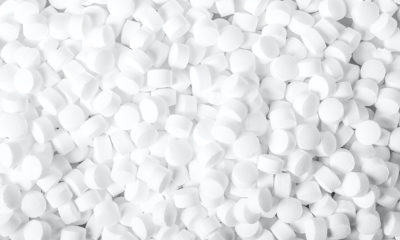
It is easy to get more power from a turbo engine, but not without some risks…
I was a passenger in a 2,0-litre turbopetrol, all-wheel-drive Nissan Pulsar GTI-R in Milton Keynes, England, when my boss at the time, a principal engine-calibration engineer, stopped talking and focused on the intimidating sight of a Dakar Yellow BMW M3 (E36) stuck to his rear bumper.
With the words “we will need this”, he pressed the red button next to the gearlever. It was an aftermarket boost controller that upped the boost to 1,5 bar for “emergency situations”. With a loud turbo whoosh, the M3 disappeared as if it had selected reverse gear. A fitting anecdote that perfectly illustrates this feature … we investigate increasing the performance of a forced-induction engine.
The theory behind power production
The general theory (as well as CAR’s stance on tuning) was covered in an earlier article, but to recap: an internal-combustion engine converts the chemical potential energy of fuel into motive power. The more fuel that can be burned efficiently, the more power an engine will produce. This is limited by the available air (oxygen) to sustain combustion. By raising the intake pressure of air above atmospheric conditions, it is easy to force more air into the combustion chambers (volume above the piston in the cylinder assembly), which allows more fuel to burn. Here we’ll focus on turbochargers.
What is boost?
The standard atmospheric pressure at sea level is 101,325 kPa, which is close to one bar pressure (100 kPa). If the intake air pressure of an engine is increased to 200 kPa (absolute pressure), it is referred to as to one bar of boost. Therefore, boost pressure is the pressure over and above atmospheric pressure.
Fitting a turbo
Converting a naturally aspirated petrol engine to a turbo engine is neither a trivial, nor cheap exercise, and best left to the experts. It is much easier to start with an original turbo engine as a base for your tuning project. If you are still adamant, then consider that the job will at least require the following:
• Choosing the correct size turbo (compressor and turbine) and a suitable exhaust manifold – the science is called turbo matching.
• Lowering the compression ratio by fitting special pistons (the thick head gasket trick rarely lasts).
• Changing engine internals like crank and conrods if the standard units are not up to the task.
• Higher spec oil pump to supply more oil pressure. Cooling jets are normally needed to cool the underside of the pistons in turbo applications.
• The manifold pressure sensor will have to be changed as it will need to read higher than atmospheric pressure.
• The fuel pump will need to be uprated to be able to supply more fuel.
• The fuelling maps will have to be re-calibrated for the additional air supply by the turbo.
• The engine cooling capacity will have to be increased.
• An intercooler will need to be fitted.
• The clutch will have to be upgraded.
• The gearbox and driveshafts will have to be upgraded.
• A suspension and brake upgrade will be needed.
Turbo-petrol
Turbopetrol engines still have to run close to the ideal 14,7:1 air-fuel ratio (stoichiometric ratio), so the incoming air needs to be throttled (using a throttle/butterfly valve) during part-load conditions. Therefore, the only time air, at higher-than-atmospheric pressure, can be effectively utilised is at full-throttle conditions.
The methods of increasing airflow in naturally aspirated (NA) engines – performance air-filters, high-lift and duration camshafts, free-flow exhausts, etc. – are still relevant, but have only a minor influence when compared to what can be accomplished when upping the boost. Even two-valve-per-cylinder engines can produce prodigious power outputs when turbocharged.
The capacity of a turbo engine is less relevant than that of an NA one because, by upping the boost, you can achieve similar airflow (and accompanying power output with the correct fuelling) as that of a much larger NA engine. Good examples are the 1980s 1,5-litre turbopetrol Formula One engines that produced more than 1 000 hp (746 kW) in qualifying trim.
1. Larger turbo 
The standard turbo can supply just a limited amount of extra air before it reaches the end of its operating spectrum (think of a small pump). The only way to get more air into the engine is fitting a larger-capacity turbo (bigger pump). This has a knock-on effect, with the biggest impact on low-speed driveability. The larger turbo takes longer to spool up and may not produce enough boost at low engine speeds (there’s little exhaust energy available).
2. Larger intercooler 
Cool air is denser than hot air and, by cooling the pressurised air before the engine, more oxygen enters the combustion chamber. There are air-to-air cooling or air-to-water cooling options available. Cooler air in a petrol engine also helps to combat the “knock” phenomenon and allows more advanced ignition timing.
3.Upping the boost
 A turbocharger has a waste gate at the turbine side that allows exhaust gases to pass without contributing to powering the turbine shaft connected to the compressor. This indirectly lowers the boost pressure (or keeps it constant) and the production of engine torque. It is also the reason that turbo engines produce a flat torque curve for much of the engine-speed operating range (torque is limited for engine- and gearbox-protection purposes).
A turbocharger has a waste gate at the turbine side that allows exhaust gases to pass without contributing to powering the turbine shaft connected to the compressor. This indirectly lowers the boost pressure (or keeps it constant) and the production of engine torque. It is also the reason that turbo engines produce a flat torque curve for much of the engine-speed operating range (torque is limited for engine- and gearbox-protection purposes).
By altering the waste gate operation (different springs for mechanical systems or a boost controller for vacuum-operated waste gates), the boost pressure limit can be exceeded. Adding more fuel will then up the power. Mechanical stresses on the powertrain will obviously increase – my boss eventually ran a big-end bearing in his Nissan Pulsar GTI-R…
4. Fuelling and timing
The vehicle’s standard fuelling system is rarely able to keep up with an increase in airflow when upping the boost and it won’t be able to supply enough fuel. If the air-fuel ratio starts to lean out at full load, it can be “game over” for the engine as exhaust-valve temperatures will then exceed thermal limits and knock (auto ignition) will destroy the pistons. The solution is an uprated fuel pump and high-flow injectors.

To protect the engine against knock and to optimise engine-performance outputs, the timing will have to be adjusted in any modified turbo engine. An increase in boost without lowering the compression ratio will require the timing to be retarded (less optimum timing) as higher in-cylinder pressures will encourage knock.
Increasing the fuelling will help, but for high-boost petrol engines the only option will be to lower the compression ratio (new hardware). Direct-injection turbo engines get away with much higher compression ratios owing to the cooling effect of the combustion chamber when the injected fuel evaporates.
Turbo or supercharger?
The main role of both units is to compress the intake air above the ambient pressure in order to cram more oxygen into the combustion chambers. Turbos employ a centrifugal compressor (connected to the turbine), whereas superchargers can be classified as Roots, Lysholm twin-screw, sliding vane or scroll-type.

The main difference is that a supercharger is driven by the engine (auxiliary loss), whereas a turbocharger is driven by the energy in the spent exhaust gases. There is a slight penalty with a turbo in terms of added back pressure in the exhaust, but that’s still far more efficient than a supercharger’s parasitic loss. The modern trend, therefore, is to use turbochargers in engine downsizing for fuel efficiency. Superchargers, on the other hand, offer faster and more linear response to tuners not interested in fuel efficiency.
Turbo-diesel
Most of the techniques described in the petrol-engine section apply to diesel engines, but oil-burners have distinct advantages. They do not need to run to a specific air-fuel ratio; the advantages of boost can be experienced even during part-load conditions (no throttle valve); and knock does not occur in diesel engines.
Mechanical strength is the only limitation when upping in-cylinder combustion pressures. It is as simple as raising the boost and increasing the fuelling, although hardware changes are needed when aiming for a big numbers. As the VW scandal illustrated, low emissions are important and a diesel particulate filter is now used to catch the soot produced. Tuned diesel engines, however, are not kind to the environment. Massive torque increases are possible, but drivers must (literally) be prepared to pick up the pieces when design limitations are exceeded.





